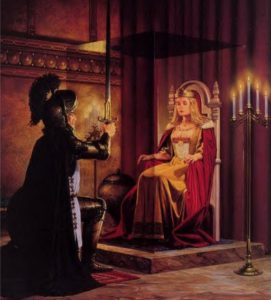 As mentioned on the swordsmanship lessons page, you will need a sword to practice with. A wooden dummy sword is fine, or even a yardstick if you can get nothing else. Not everyone can afford a nice replica sword to work with, so you might have to improvise and use a “dummy.” You want some length to your “dummy,” since we are talking longsword here. Don’t worry so much about the blade part of your dummy as the handle. Get something–like a wooden dowel or broomstick—that is about as round and shaped like a sword hilt. Broomstick thickness or a bit smaller is perfect. A 3 or 4 foot dowel from the lumber store works fine.
As mentioned on the swordsmanship lessons page, you will need a sword to practice with. A wooden dummy sword is fine, or even a yardstick if you can get nothing else. Not everyone can afford a nice replica sword to work with, so you might have to improvise and use a “dummy.” You want some length to your “dummy,” since we are talking longsword here. Don’t worry so much about the blade part of your dummy as the handle. Get something–like a wooden dowel or broomstick—that is about as round and shaped like a sword hilt. Broomstick thickness or a bit smaller is perfect. A 3 or 4 foot dowel from the lumber store works fine.
It is important to note that non-combatant Daughters and Clerics of Tsion should also perform the following meditation exercise (but not as strenuously as combatants must) in order to get a feel for the way the sword moves, because in higher exercises the D’s and C’s of Tsion meditate and actually become (or “inhabit”) their combatant partner’s sword. You should also log them over the course of a month (as described below). You should think about “identifying” literally with the sword. Feeling the sword-human connection that is made when you hold it in your hand, moving it, experiencing its weight, hearing the sounds it makes thru the air, etc.is all helpful when in our more advanced studies you “become” or “inhabit”the weapon.
Sword Stances Meditation of the Templar Order:
Put your body thru the motions. Practice and memorize the five positions/ stances of our Sword-Stances Meditation. Study the photographs of the dude in the red shirt because these exact stances are part of our ritual “warm up” and warrior’s way of prayer. In the far east they have the Kata, we Templars have our form of “walking meditation,” too, and this is it.
Lab Report: Send to the School a report and log of your practice, results, data etc. over a period of one month’s use of the technique.You don’t have to comment for every single day of that month, but you are required to at least write the date in your log for any day you perform the Sword-Stances Meditation. On at least several of the other days you should include more information, results, data such as moonphase, weather or if you were inside or out, etc.

 1. The first position, Ochs, essentially assumed by drawing the weapon up and to the “side”. The point may aim somewhat downward or upward but typically aimed at the opponent’s face or throat.
1. The first position, Ochs, essentially assumed by drawing the weapon up and to the “side”. The point may aim somewhat downward or upward but typically aimed at the opponent’s face or throat. 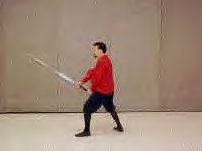
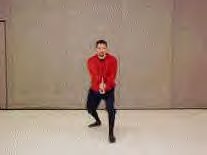 2. Lower the weapon to the second, or Pflug. Making a small single step of the foot is useful in transitioning here. There are a few variations of this such as pulling the hilt further back near or even past the hip.
2. Lower the weapon to the second, or Pflug. Making a small single step of the foot is useful in transitioning here. There are a few variations of this such as pulling the hilt further back near or even past the hip. 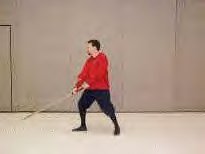
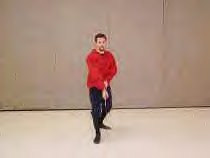 3. The third position is , Alber, by lowering the point with the hands. Making a pass of the foot (forward or back) in transition. This guard is also the “middle iron door”.
3. The third position is , Alber, by lowering the point with the hands. Making a pass of the foot (forward or back) in transition. This guard is also the “middle iron door”. 
 4. The fourth is Vom Dach/Vom Tag (Oberhut), by raising the weapon up with the shoulders (held at roughly 45-degrees, not horizontal). Passing the foot is useful in transitioning here.
4. The fourth is Vom Dach/Vom Tag (Oberhut), by raising the weapon up with the shoulders (held at roughly 45-degrees, not horizontal). Passing the foot is useful in transitioning here. 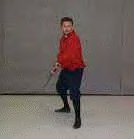
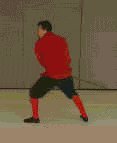 5. The fifth is the “Tail”, assumed by rotating the weapon down and to the right from above. Passing the foot again is useful in transitioning here.
5. The fifth is the “Tail”, assumed by rotating the weapon down and to the right from above. Passing the foot again is useful in transitioning here.
End of Stance Meditation Sequence

 Variations to Try
Variations to Try
Variation of Position 4
The Roof guard may also be placed over the shoulder rather than over the head. The hilt can be above or in front of the collar. Note the blade is not behind the head nor horizontal. Some armors prevent holding the weapon above the head, hence the side version. 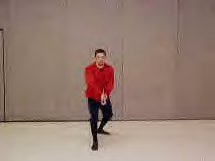
 Variations of 1 and 2
Variations of 1 and 2
Pflug and Ochs on the left side. Note that Pflug changes the hip it is in front of depending on which leg leads. Also, the Ochs/Finestra is not a “hanging point” or hanging guard position.
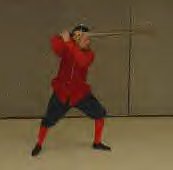
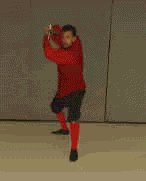 Variation of 1
Variation of 1
A right-side Ochs (Finestra or “window” in Italian schools) with point aimed at the opponent’s face. The blade is held with edges vertical and the hilt held beside the head, as well as often just above it.
Thanks to BasicGuards (Stances) of Medieval Longsword for all this wonderful materialand photographs.

